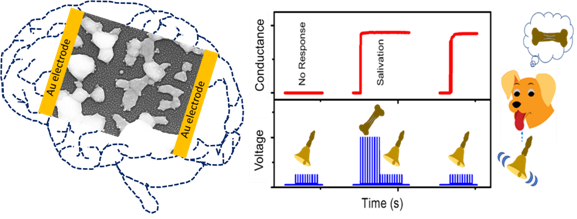Scientists have created a device that can mimic the knowledge-related actions of the human brain and is more efficient than traditional techniques at working like artificial intelligence, thus increasing computational speed and energy consumption efficiency.
Artificial intelligence is now a part of our daily lives, starting with smart filters in email filters and communications to help fight the Kovid-19 epidemic. But Artificial Intelligence can do much more than self-driving autonomous vehicles, augmented reality for healthcare, drug discovery, big data handling, real-time pattern / image recognition, solving real-world problems. These can be realized with the help of a neuromorphic device that can mimic the human brain structure for brain-induced efficient computing capability. The human brain consists of about a hundred billion neurons that consist of axons and dendrites. These neurons connect with each other extensively via axon and dendrites, forming massive junctions called synapses. This complex bio-neural network is believed to provide superior cognitive abilities.
Software-based artificial neural networks (ANNs) can be seen defeating humans in games (AlphaGo and AlphaZero) or helping to handle the Kovid-19 situation. But the power-hungry (in MW) von Neumann computer architecture slows down the performance of the ANN due to the serial processing available, while the brain consumes only 20 Watts through parallel processing. It is estimated that the brain consumes 20% of the body's energy. This is 20 watts from the conversion of calories ( https://hypertextbook.com/facts/2001/JacquelineLing.shtml ) whereas traditional computing platforms consume megawatts, ie 1 million watts of energy, to mimic basic human knowledge.
To overcome this obstacle, a hardware-based solution involves an artificial synaptic device that, unlike transistors, can simulate the functions of the human brain synapse. Scientists have long been attempting to develop a synaptic device that can mimic complex psychological behaviors without the help of external supporting (CMOS) circuits.
To address this challenge, scientists at the Jawaharlal Nehru Center for Advanced Scientific Research (JNCASR), Bengaluru, an autonomous organization working under the Department of Science and Technology, Government of India, through a simple self-manufacturing method (while heating the device structure Created by itself) devised a new approach to create an artificial synaptic network (ASN) resembling biological neural networks. This achievement has been recently published in the journal 'Materials Horizons'.
With the aim of developing a synaptic tool for neuromorphic applications by the fabrication method, the team at JNCASR discovered metallic systems mimicking neuronal bodies and axonal network connectivity, like biological systems. To realize such a structure, he found that a self-manufacturing process was easy, scalable, and cost-effective.
In their research, the JNCASR team designed silver (Ag) metallic branched islands and nanoparticles with nanogap separation to resemble bio neurons and neurotransmitters where dewatering disconnects / film breakdowns into isolated islands or spherical particles are continuous. . Many cognitive activities of a high quality are simulated with such architecture. Fabricated artificial synaptic networks (ASNs) consist of a network of silver (Ag) agglomerates, separated by nanogaps filled with individual nanoparticles. They found that wetting the Ag film at high temperatures created island structures separated by nanogaps resembling bio-neural networks.
This classified structure, using programmed electrical signals as a real-world stimulus, has led to a variety of learning activities such as short-term memory (STM), long-term memory (LTM), ability, depression, collaborative learning, interest-based learning, Supervision followed. Synaptic fatigue due to excessive learning and its self-correction were also mimicked. Notably all these behaviors were followed in a single material system without the help of external CMOS circuits. A prototype kit has been developed to simulate Pavlov's dog behavior that shows the ability of this device towards neuromorphic artificial intelligence. The JNCASR team has made further strides in accomplishing advanced neuromorphic artificial intelligence by organizing a nanomaterial such as a biological nerve material.
Professor Ashutosh Sharma , Secretary, Department of Science and Technology , said that nature has extraordinary time and diversity to take on new forms and functions through evolution. Learning and simulating new processes, technologies, materials and tools from nature and biology is the key path to future progress that will increasingly integrate a world full of life with man-made technologies.

Artificial synaptic network scanning of the electron microscope image of the device is similar to a bio-neural network as demonstrated by imitation of Pavlov's dog, where collaboration education is performed, where the dog hears saliva after training and drips saliva.




0 Comments
please do not spam link